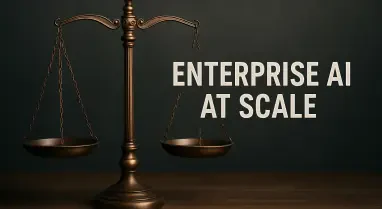In the rapidly shifting terrain of cloud computing, a startling and urgent threat has surfaced with the discovery of a severe vulnerability in Redis, an in-memory data store integral to about 75% of cloud environments worldwide. Known as RediShell and cataloged as CVE-2025-49844, this critical flaw has silently persisted in Redis’s source code for nearly 13 years, presenting a dangerous opportunity for Remote Code Execution (RCE). Rated with a CVSS score of 10.0—the maximum severity—this marks an unprecedented event as the first critical vulnerability in Redis’s history. The potential for attackers to exploit this flaw and gain full control over affected systems raises alarms across industries. As cloud systems increasingly rely on Redis for essential functions like caching and session management, the stakes couldn’t be higher. This vulnerability not only threatens individual organizations but also exposes systemic risks in the broader digital infrastructure, demanding immediate attention and action from all stakeholders involved in cloud security.
Understanding the RediShell Vulnerability
Technical Breakdown of the Flaw
The core of the RediShell vulnerability lies in a Use-After-Free (UAF) memory corruption bug embedded within Redis’s Lua scripting feature, a component enabled by default in most installations. This flaw allows a post-authentication attacker to craft a malicious Lua script that exploits the memory error, effectively escaping the sandbox environment of Redis’s Lua interpreter. Once outside the sandbox, attackers can execute arbitrary code on the host system, gaining unrestricted access to critical resources. This technical exploit transforms a seemingly contained scripting tool into a gateway for comprehensive system compromise. The simplicity of deploying such a script belies the profound danger it represents, as it bypasses intended security boundaries with alarming ease, turning a feature meant for flexibility into a severe liability for organizations relying on Redis in their infrastructure.
Compounding the issue is the historical context of this vulnerability, which has existed undetected for approximately 13 years within Redis’s codebase. This long-standing flaw highlights a critical oversight in the development and maintenance of such widely used software. The default-enabled status of Lua scripting further exacerbates exposure, as many administrators may not even be aware of the feature’s presence or its associated risks. This combination of a deeply embedded bug and widespread unawareness creates a perfect storm for exploitation. Attackers with knowledge of this vulnerability can target unsuspecting systems, leveraging years of unchanged code to their advantage. The persistence of this issue over more than a decade underscores the challenges in securing open-source technologies, where updates and patches must continuously address both new and legacy threats.
Severity and Impact
The severity of RediShell cannot be overstated, as evidenced by its CVSS score of 10.0, a rare designation reserved for only the most catastrophic vulnerabilities. This rating reflects the ease with which attackers can achieve arbitrary code execution and the profound consequences that follow. Such a score places this flaw in an elite category of threats, signaling to the tech community the urgent need for response. It signifies not just a technical failure but a potential crisis for any organization using Redis, particularly in cloud environments where data sensitivity and uptime are paramount. The unprecedented nature of this rating for Redis, a tool so deeply integrated into modern systems, amplifies the call for immediate action across sectors that depend on its reliability for critical operations.
Beyond the numerical severity, the real-world impact of this vulnerability manifests in a range of devastating outcomes. Attackers exploiting RediShell can steal sensitive data, hijack resources for malicious purposes like crypto mining, or install malware to maintain persistent access. Perhaps most alarmingly, the flaw enables lateral movement within networks, allowing attackers to escalate privileges and compromise additional systems using stolen credentials such as SSH keys or IAM tokens. These actions can disrupt entire cloud ecosystems, leading to significant financial and reputational damage. The breadth of potential harm—from direct data breaches to indirect network-wide threats—illustrates why this vulnerability poses such a monumental risk to organizations that may not even realize their exposure until it’s too late.
Scope of Exposure and Risk Levels
Widespread Vulnerability in Cloud Deployments
The scale of exposure tied to RediShell is staggering, with research indicating that around 330,000 Redis instances are directly accessible via the internet, creating a vast attack surface for potential exploitation. Of these, approximately 60,000 lack any form of authentication, leaving them wide open to unauthorized access by even the least sophisticated attackers. This alarming statistic reveals a critical oversight in basic security practices among many organizations. Redis’s role as a foundational element in cloud environments—supporting functions like caching and messaging—means that these exposed instances are often integral to business operations. The sheer number of vulnerable systems highlights the urgent need for widespread awareness and remediation to prevent a wave of attacks that could capitalize on such readily available targets.
Further intensifying the concern is the prevalence of Redis in containerized environments, with 57% of cloud deployments using container images that frequently lack proper security hardening. Containers, while efficient for scalability, often come with default configurations that prioritize ease of use over robust protection, leaving Redis instances susceptible to exploitation. Many organizations deploy these containers without fully understanding the security implications, inadvertently increasing their risk profile. This trend underscores a broader issue in cloud computing where rapid adoption of technology can outpace the implementation of necessary safeguards. As container usage continues to grow, addressing these security gaps becomes not just a technical necessity but a strategic imperative to protect critical infrastructure from threats like RediShell.
Risk Categorization
Risk levels associated with RediShell vary significantly based on the deployment context of Redis instances, with internet-exposed and unauthenticated systems facing the highest danger, often classified as critical threats. These instances represent low-hanging fruit for attackers who can easily scan and target them without needing advanced skills or insider access. The absence of authentication acts as an open invitation, allowing malicious actors to exploit the vulnerability with minimal effort. Such critical risks demand the most immediate attention, as they pose a direct threat to organizational data and system integrity. Prioritizing these highly exposed systems in mitigation efforts is essential to prevent widespread breaches that could have cascading effects across interconnected cloud services.
Internally exposed Redis instances, while not as immediately accessible as their internet-facing counterparts, still present a high risk, particularly in scenarios involving insider threats or attackers who have gained initial network access. These systems can serve as stepping stones for lateral movement, enabling attackers to deepen their foothold within an organization’s infrastructure. Even with authentication in place, the potential for compromised credentials or misconfigurations heightens the danger. The high-risk nature of internal deployments emphasizes the importance of comprehensive security measures beyond just external protections. Organizations must adopt a defense-in-depth approach, ensuring that internal systems are fortified against exploitation as part of a broader strategy to mitigate the pervasive threat posed by this vulnerability.
Mitigation Strategies and Industry Response
Urgent Remediation Steps
Addressing the RediShell vulnerability requires swift action, starting with the immediate update to the patched version of Redis released on October 3 of this year. This patch, developed in response to the flaw’s discovery, closes the critical gap exploited by the Use-After-Free bug in Lua scripting. However, the urgency of applying this update cannot be overstated, as every day an unpatched system remains online increases the likelihood of exploitation. Organizations must prioritize this task, integrating it into their emergency response protocols to ensure minimal delay. The release of this fix represents a critical lifeline for affected systems, but its effectiveness depends entirely on timely deployment across all vulnerable instances, particularly in cloud environments where rapid scalability can sometimes outpace security updates.
Patching alone, however, does not fully secure Redis instances against potential threats. Additional hardening measures are essential to build a robust defense. Enabling strong authentication prevents unauthorized access, while disabling unnecessary features like Lua scripting eliminates potential attack vectors. Minimizing privileges under which Redis operates further limits damage in case of a breach, and implementing strict network access controls restricts who can interact with these systems. These layered defenses create multiple barriers for attackers, significantly reducing the risk of successful exploitation. Adopting such comprehensive strategies ensures that organizations not only address the immediate vulnerability but also strengthen their overall security posture against future threats in the dynamic landscape of cloud computing.
Collaborative Disclosure Efforts
The response to RediShell exemplifies the value of coordinated efforts between researchers and software maintainers, with Wiz Research and the Redis team working closely to address this critical flaw. Their collaboration, initiated earlier this year, followed a structured disclosure timeline that balanced the need to inform users with providing sufficient time for mitigation. Transparency throughout this process has been commendable, fostering trust within the tech community and ensuring that organizations received clear guidance on the threat. This partnership sets a benchmark for how critical vulnerabilities should be handled, demonstrating that open communication can accelerate effective responses while minimizing public risk during the vulnerable window before a patch is available.
Responsible disclosure, as modeled in this case, plays a pivotal role in modern cybersecurity practices, especially for widely used software like Redis. By adhering to a framework that prioritizes user safety, the involved parties ensured that detailed information about RediShell was released alongside actionable solutions. This approach contrasts with more chaotic disclosures that can lead to panic or exploitation before fixes are ready. The success of this collaboration highlights an industry-wide shift toward structured processes that protect end-users while addressing flaws efficiently. It serves as a reminder that handling such threats is not just a technical challenge but also a matter of ethical responsibility, shaping how future vulnerabilities might be managed across the sector.
Broader Implications for Cloud Security
Open-Source Software Challenges
The emergence of RediShell sheds light on the inherent risks of relying heavily on open-source software like Redis within cloud infrastructure. While these tools offer flexibility and cost savings, they often come with vulnerabilities that can remain hidden for years, as evidenced by this 13-year-old flaw. The widespread adoption of such software amplifies the impact of a single issue, potentially affecting millions of systems globally. This situation reveals a critical tension in modern computing: the benefits of community-driven development must be balanced against the security challenges that arise from less centralized oversight. Addressing these risks requires a fundamental shift in how open-source components are integrated into critical systems, pushing for rigorous vetting and continuous monitoring to prevent similar threats from lingering undetected.
A significant contributing factor to vulnerabilities like RediShell is the prevalence of default insecure configurations in open-source deployments. Many organizations implement tools like Redis without adjusting settings to prioritize security, often due to a lack of awareness or resources. These defaults, designed for ease of use, can leave systems exposed to exploitation, as seen with the enabled Lua scripting feature. This pattern points to a broader need for proactive security practices, where secure-by-design principles are embedded from the outset. Encouraging developers and administrators to adopt hardened configurations as standard practice could mitigate many risks, transforming how open-source software is perceived and utilized in environments where data protection and system integrity are non-negotiable priorities.
Community and Collective Responsibility
Initiatives like ZeroDay.Cloud underscore the growing recognition of collective responsibility in addressing critical vulnerabilities such as RediShell. This community-driven effort focuses on identifying and responsibly disclosing zero-day flaws, fostering a collaborative environment where researchers, developers, and organizations work together to enhance security. By providing a platform for shared knowledge and coordinated action, such initiatives help bridge gaps that individual entities might struggle to address alone. The role of these programs is particularly vital in the context of open-source software, where the user base is diverse and widespread, necessitating unified strategies to tackle systemic threats. This approach amplifies the impact of discoveries like RediShell, turning them into opportunities for industry-wide improvement rather than isolated crises.
The shared duty to protect interconnected digital ecosystems is a recurring theme in the wake of vulnerabilities like RediShell, emphasizing that no single organization can secure the tech landscape in isolation. As cloud environments grow more complex and interdependent, the need for collective vigilance becomes paramount. This responsibility extends beyond technical fixes to include cultural shifts toward prioritizing security at every level of software development and deployment. Encouraging active participation in community efforts, supporting transparent disclosure practices, and advocating for stronger default protections are all steps toward a safer digital future. Ultimately, addressing such critical flaws serves as a reminder that safeguarding today’s technology infrastructure is a collaborative endeavor, essential for sustaining trust and resilience in an increasingly connected world.






